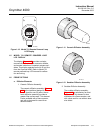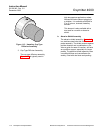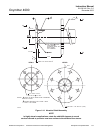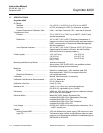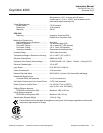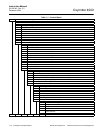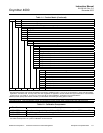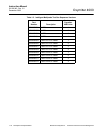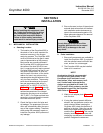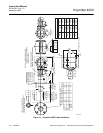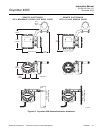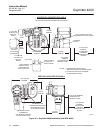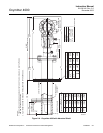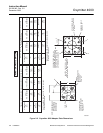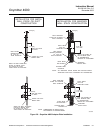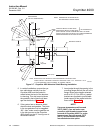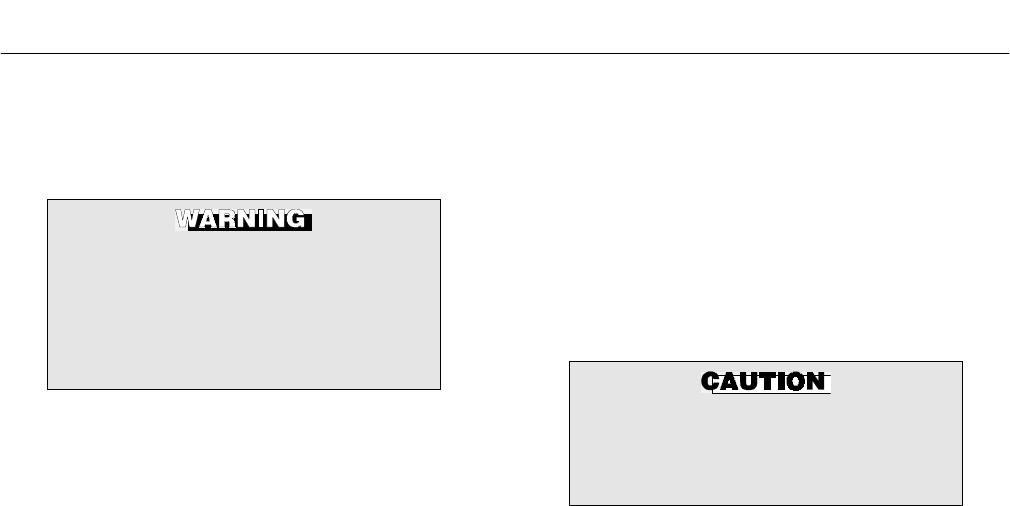
Instruction Manual
IB-106-340 Rev. 3.0
December 2003
Rosemount Analytical Inc. A Division of Emerson Process Management Installation 2-1
Oxymitter 4000
SECTION 2
INSTALLATION
Before installing this equipment, read
the “Safety instructions for the wiring
and installation of this apparatus” at
the front of this Instruction Bulletin.
Failure to follow safety instructions
could result in serious injury or death.
2-1 MECHANICAL INSTALLATION
a. Selecting Location
1. The location of the Oxymitter 4000 in
the stack or flue is most important for
maximum accuracy in the oxygen
analyzing process. The Oxymitter 4000
must be positioned so the gas it meas-
ures is representative of the process.
Best results are normally obtained if
the Oxymitter 4000 is positioned near
the center of the duct (40-60% inser-
tion). Longer ducts may require several
Oxymitter 4000 units since the O
2
can
vary due to stratification. A point too
near the wall of the duct, or the inside
radius of a bend, may not provide a
representative sample because of the
very low flow conditions. The sensing
point should be selected so the proc-
ess gas temperature falls within a
range of 32° to 1300°F (0° to 704°C).
Figure 2-1 through Figure 2-9 provide
mechanical installation references. The
ambient temperature of the integral
electronics housing must not exceed
185°F (85°C). For higher ambient tem-
peratures, we recommend the remote
mounted electronics option.
2. Check the flue or stack for holes and
air leakage. The presence of this con-
dition will substantially affect the accu-
racy of the oxygen reading. Therefore,
either make the necessary repairs or
install the Oxymitter 4000 upstream of
any leakage.
3. Ensure the area is clear of internal and
external obstructions that will interfere
with installation and maintenance ac-
cess to the membrane keypad or LOI.
Allow adequate clearance for removal
of the Oxymitter 4000.
Do not allow the temperature of the
Oxymitter 4000 electronics to exceed
185°F (85°C) or damage to the unit
may result.
b. Probe Installation
1. Ensure all components are available to
install the Oxymitter 4000. If equipped
with the optional ceramic diffusion ele-
ment, ensure it is not damaged.
2. The Oxymitter 4000 may be installed
intact as it is received.
NOTE
An abrasive shield is recommended
for high velocity particulates in the
flue stream (such as those in coal-
fired boilers, kilns, and recovery boil-
ers). Vertical and horizontal brace
clamps are provided for 9 ft and 12 ft
(2.75 m and 3.66 m) probes to provide
mechanical support for the Oxymitter
4000. Refer to Figure 2-7.
3. Weld or bolt adapter plate (Figure 2-6)
onto the duct.
4. If using the optional ceramic diffusion
element, the vee deflector must be cor-
rectly oriented. Before inserting the
Oxymitter 4000, check the direction of
gas flow in the duct. Orient the vee de-
flector so the apex points upstream to-
ward the flow (Figure 2-8). This may be
done by loosening the setscrews and
rotating the vee deflector to the desired
position. Retighten the setscrews.



